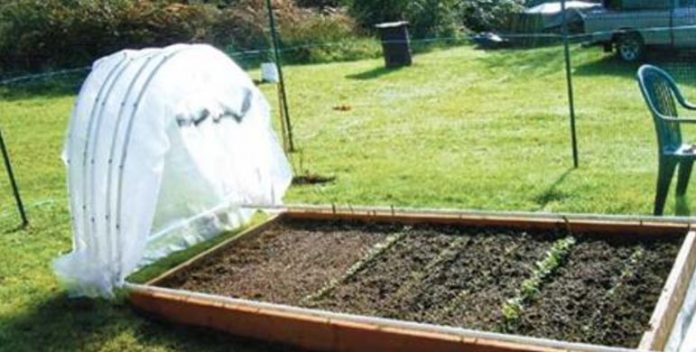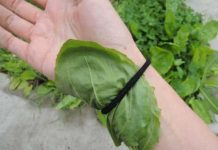If you are looking for a way to extend crop production into spring and autumn, or to grow some plants in winter, a greenhouse can be the perfect solution! The retractable cover protects plants from the sun and keeps the soil warmer during the colder months.
The greenhouse structure is ideal for plants such as spinach, lettuce, beets, carrots and coriander. Be sure to choose plants and vegetables that will grow well unprotected after about two months in the hoop house for best results, recommends Growing for Market.
How to build the Hoop House in 6 easy steps
- Build the frame
After measuring and marking out the site of the hoop house, you will need to build your frame. Choose rot-resistant wood for the base. You will need four 2-by-6 boards around the edge; if your hoop house is less than 14 feet long, opt for 2-by-4 boards. Screw the frame in place using corner joints and wood screws. Mother Earth News recommends using 10 x 3 inch hot-dipped galvanized wood screws.
You may want to place stakes in the corner of the boxes to keep everything in place while you work on the rest of the structure. - Define your basic pipes
Your PVC pipe should be between 18 and 36 inches high. Harder ground will require shorter pipes. Use a drop hammer to hammer a pipe at each corner and then every 3 feet on the sides. Make sure your pipes are close to the inside edges of the frame. Pound the pipes until they are even with the top of the frame. - Hoops
The size of the pipe hoop that creates the main structure of your cover is determined by the size of the arch you will need. For example, an 18 foot wide hoop requires two 1 meter long pipes and one 20 foot long pipe for each hoop. When purchasing your pipe, ask one pipe in each pair to have a flared end so that the pipes connect.
To install the hoops, lay your pipes on the ground. Slide the end of one pipe into the base pipe, bend the pipes so that the other end fits into the base on the other side and use a drill to drill through the pipes and the floor frame on one side only for now. Push the hoop all the way through, then add a body bolt to the holes.
Get help to push back the unclogged parts of the pipe until the arch is where you want it. Then lock the rest in place.
- Purlins
Make your arch structure strong by adding horizontal pipes to connect the hoop. Most hoop houses require at least one purlin on top and two on each side of the structure. Depending on your climate, you may need more to provide stability against high winds and rain. Secure with body bolts.
To make your hoop house retractable from the bottom up, attach wooden boards to the hip 1 on 2 about 3 feet off the ground. You will attach the main plastic pieces to these boards. - Attach your plastic
Mother Earth News recommends choosing a high quality greenhouse plastic. The material is stronger and lasts longer than the cheap plastics you will find elsewhere. In addition, the greenhouse material provides better insulation for your plants.
When attaching your plastic, be sure to leave a foot of extra space around the edges and about 2 feet of extra plastic at the ends. Wiggle it around on your structure and tighten as needed. You can attach the plastic using a wire and track. Try to use two layers of plastic for better insulation. - Your floor
Your floor should have enough space for you to get in and out without disturbing the plants you have lined up inside. Use a light material for the walkways so that the soil is largely intact. Straw, sawdust and mulch work well.










